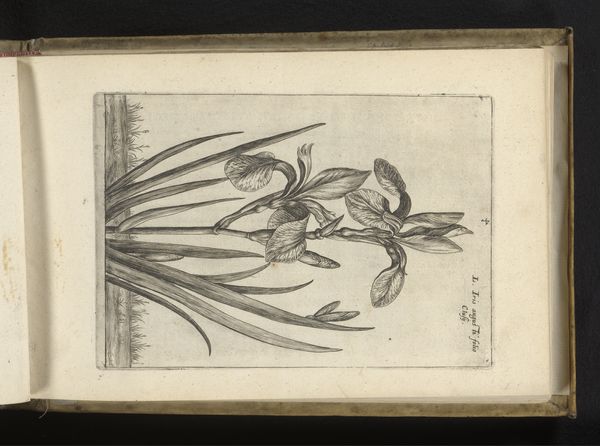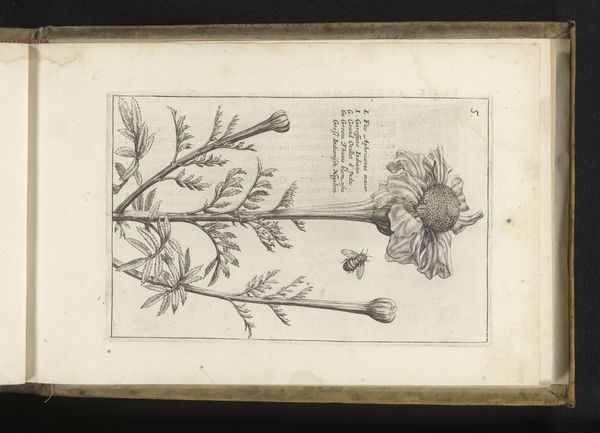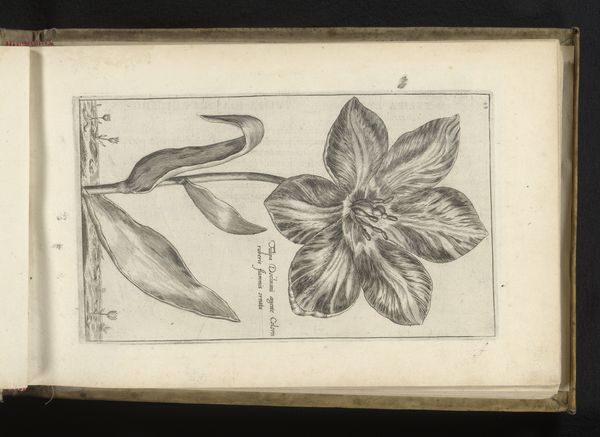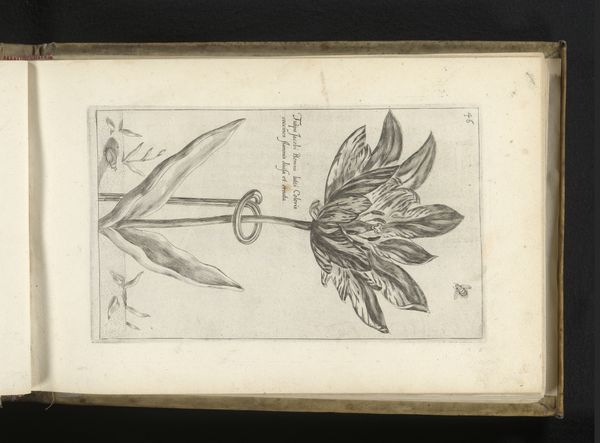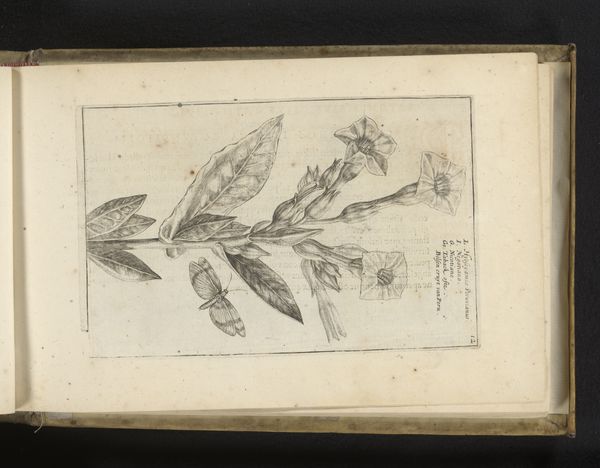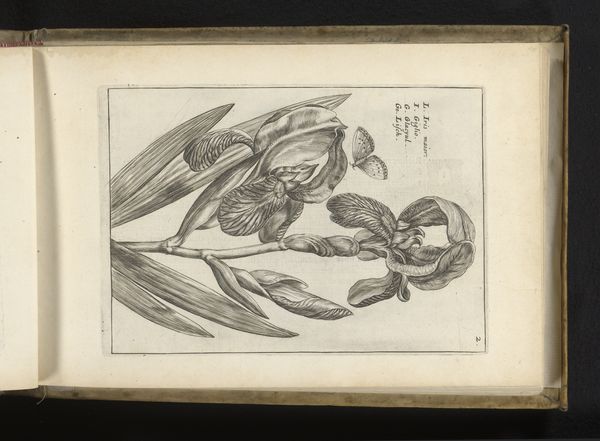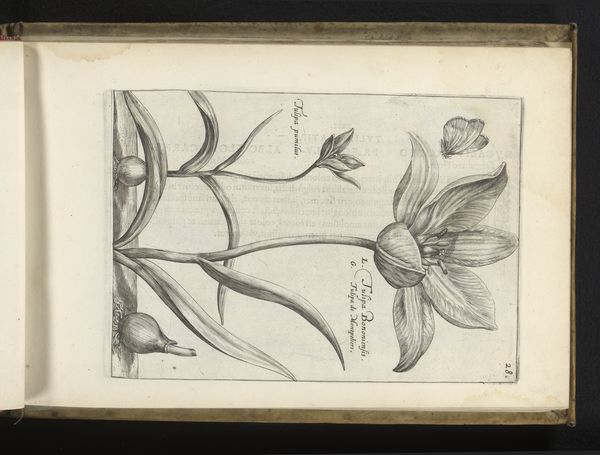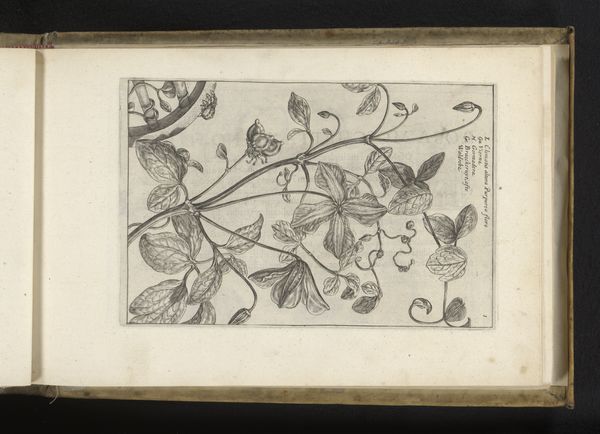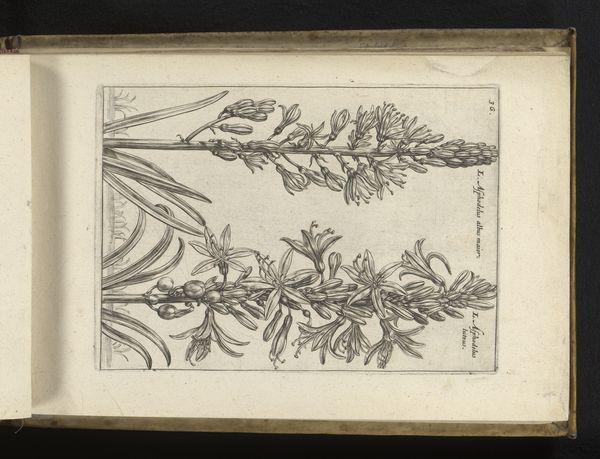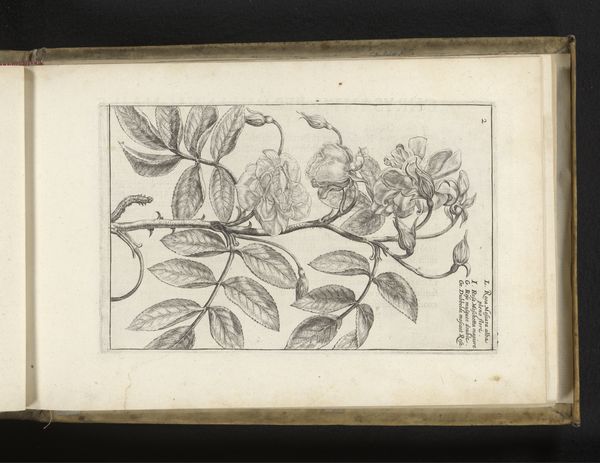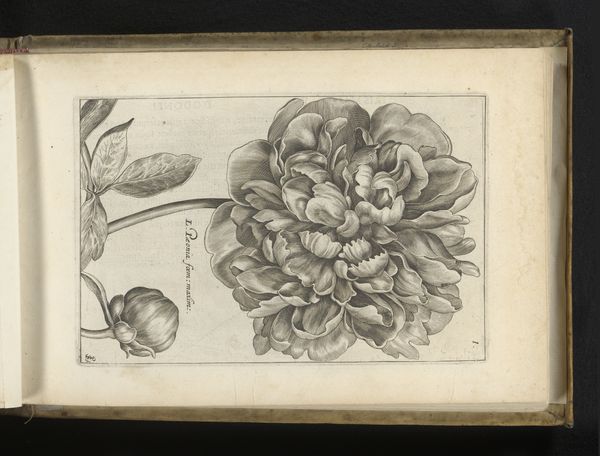
drawing, paper, ink, pen
#
drawing
#
aged paper
#
toned paper
#
sketch book
#
flower
#
paper
#
personal sketchbook
#
ink
#
pen-ink sketch
#
pen and pencil
#
pen work
#
sketchbook drawing
#
pen
#
storyboard and sketchbook work
#
northern-renaissance
#
academic-art
#
sketchbook art
#
realism
Dimensions: height 220 mm, width 143 mm
Copyright: Rijks Museum: Open Domain
Curator: This is a drawing entitled "Lelie," created in 1617 by Crispijn van de Passe the Younger. It's currently held in the collection of the Rijksmuseum. Editor: It's beautiful. Such intricate linework. You can almost feel the aged paper; the monochromatic sketch gives a tangible sense of history. Curator: Absolutely. Passe was known for his meticulous detail, and you see that here. The medium is pen and ink on paper, common at the time, but his rendering of the lily is exceptional. Consider also that illustrated catalogs like these supported the botanical trade. Editor: The context of its creation is also significant—what do we know about where the paper came from and the types of ink and pens that would have been available to the artist? And was this purely artistic exploration, or was this flower a commodity? Curator: We know that Dutch paper production was thriving during this period. The labor involved in both making the paper and the meticulous process of creating the botanical illustration indicates a value was already implied on natural subjects and artistic production. It really puts into perspective the role these images played in wider societal attitudes. Editor: I like to consider these botanical drawings as labor intensive artworks, and not purely objective documentations. Curator: Agreed, though their supposed objectivity served specific interests. Disseminating visual knowledge about newly discovered species through prints helped to cement Dutch scientific and economic dominance, so Passe's work was also participating in these larger power dynamics. Editor: It's amazing how something as simple as a flower drawing can reveal so much about the world in which it was made, don't you think? Curator: Precisely, a reflection of nature filtered through social, economic, and artistic practices.
Comments
No comments
Be the first to comment and join the conversation on the ultimate creative platform.
